COVID-19 Deaths - Australia
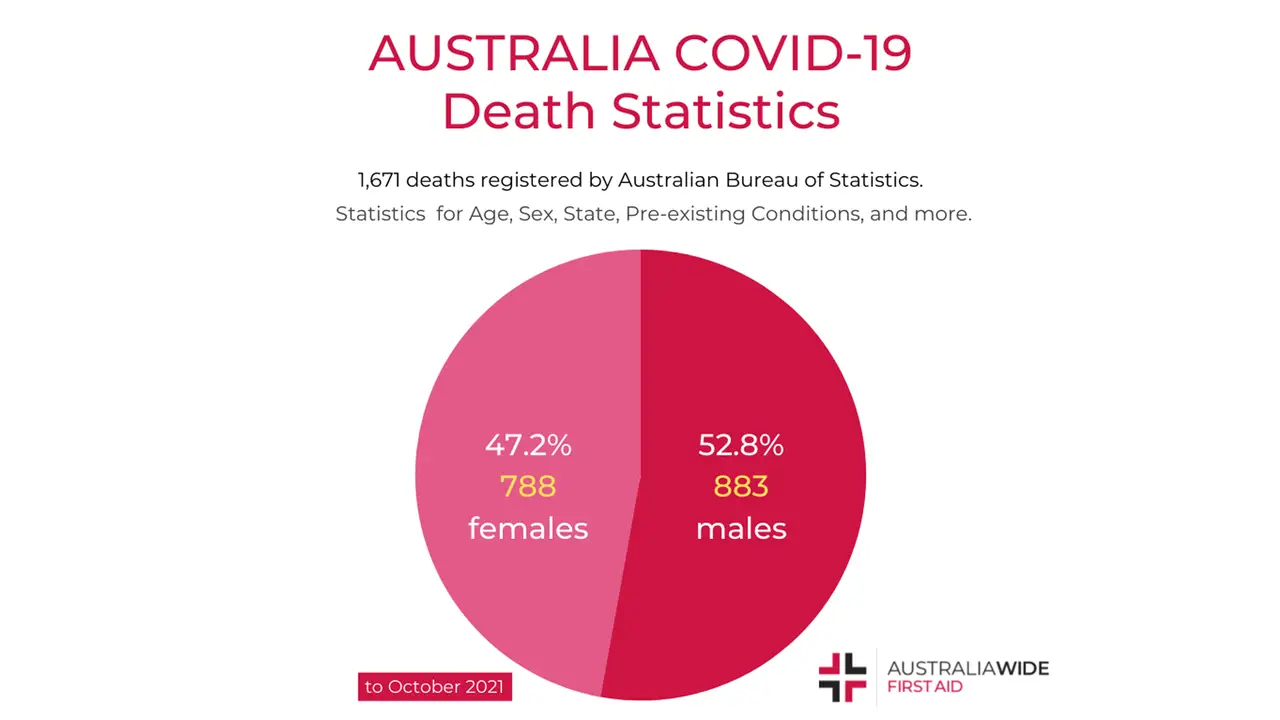

COVID deaths in Australia, to 31 October 2021, totalled 1,671. Registered by the Australian Bureau of Statistics (ABS), this includes 16 suspected as being due to COVID-19 but not confirmed in a laboratory.
Registrations for this period may yet be added from the Registries of Births, Deaths and Marriages.
These deaths were doctor-certified, with acute respiratory symptoms – e.g. viral pneumonia or acute respiratory distress syndrome – being listed in most cases as a consequence of the COVID-19 virus.
Pre-existing chronic conditions were recorded on the death certificates of 71.2% of the people who died from COVID-19, – the most common being chronic heart diseases.
Death due to COVID-19 is defined by the WHO as death resulting from a clinically compatible illness in a probable or confirmed COVID-19 case. Between illness and death, no period of complete recovery from COVID-19 should exist. Exceptions are when a clear alternative cause of death is not related to COVID (e.g. trauma).
All but 16 of the 1,671 registered COVID-19 deaths in Australia to 31 October 2021 have laboratory confirmation of the virus. These 16 (1.0%) deaths were doctor-certified as suspected cases of COVID-19 with no laboratory confirmation at the time of completing the MCCD (Medical Certificate of Cause of Death).
The ABS bases its Mortality data on death registrations from the jurisdictional Registries of Births, Deaths and Marriages.
Cause of death information is sourced from the Medical Certificate of Cause of Death (MCCD) completed by a certifying practitioner.
In addition to the above-mentioned civil registration systems, COVID deaths in Australia are recorded through disease surveillance systems, which are instrumental in providing rapid access to information on both infections and mortality.
The slower registration-based system is more comprehensive and provides additional insights into COVID deaths. For example, data from the MCCD enables identification of underlying and associated causes of death. Demographic information about the decedent is also provided, e.g. age, gender, place of residence.
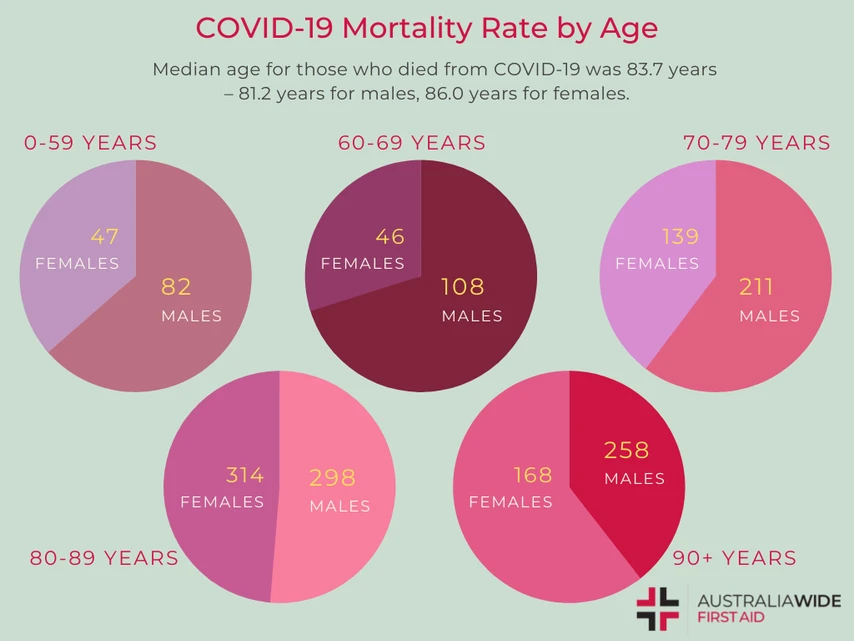
Registered deaths due to COVID-19 were higher in Males (883) than in Females (788).
Australians aged 80-89 years – both males and females – were the hardest hit with 612 COVID-19 deaths.
More males than females under 80 years died – 401 compared with 232.
The median age for those who died from COVID-19 was 83.7 years – 81.2 years for males, 86.0 years for females.
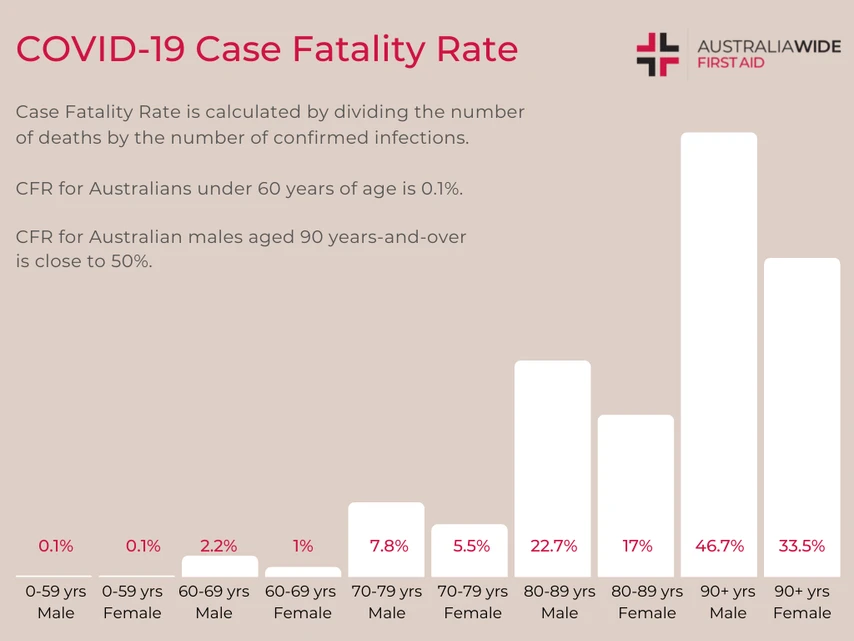
The overall case fatality rate (CFR) for COVID-19 in Australia, as of 31 October 2021, was 1.0%.
The case fatality rate provides an indication of disease severity. For COVID-19, CFR is calculated by dividing the number of deaths by the number of confirmed infections.
Demographics have a marked difference in this CFR – CFR for Australians under 60 years of age is 0.1%. CFR for Australian males aged 90 years and over is close to 50%.
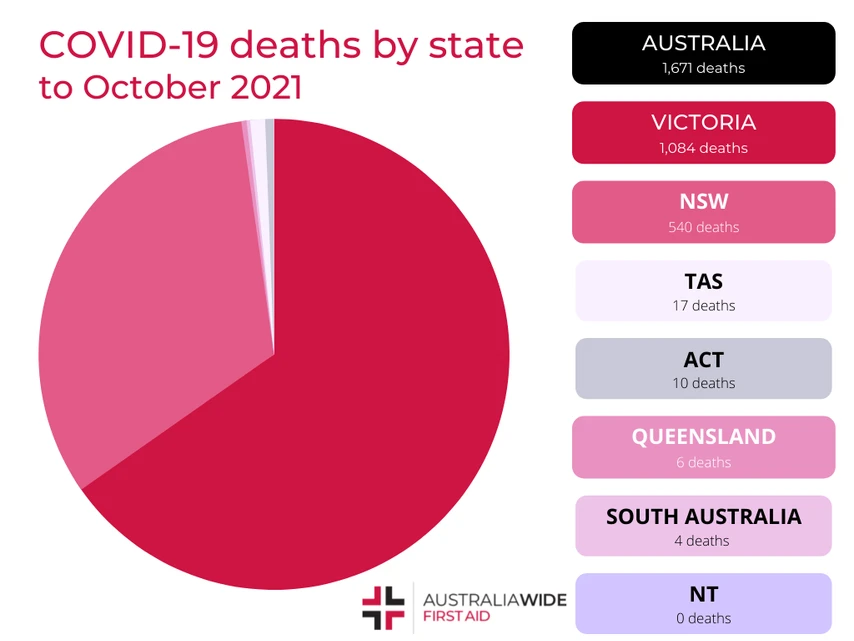
As of 31 October 2021, Victoria registered the most deaths due to COVID-19 – 1,084, with NSW registering 540 deaths. No deaths were registered in the Northern Territory, and less than 10 in both Queensland (6) and South Australia (4).
COVID-19 was the underlying cause for 1,671 registered deaths up to 31 October 2021. On average, COVID deaths included 2.6 other diseases and conditions certified alongside the virus.
The WHO defines the underlying cause of death as that which initiated medical events leading to death. Conditions that are not the underlying cause of death, are referred to in the MCCD as associated causes.
Associated causes can be either:
On death certificates attributing COVID-19, 91.0% list other conditions. Causal sequence and pre-existing conditions are listed on more than 40% of all MCCDs.
COVID-19 is a respiratory illness and common outcomes include viral pneumonia and secondary infections. Also reported but less common are other outcomes, such as acute kidney injury.
These causal sequence disease progressions were described by the medical certifier in 1,096 (65.6%) of the 1,671 COVID-19 registered deaths to 31 October 2021.
Among these 1,096 deaths:

Pre-existing chronic conditions increase the risk of COVID-19 complications, developing severe illness from COVID-19, and therefore the risk of death.
Pre-existing chronic conditions were listed on death certificates for 1,189 (71.2%) of the 1,671 COVID-19 registered deaths to 31 October 2021.
Of these 1,189 deaths:
The comorbidities present in Australian deaths due to COVID-19 are consistent with those reported internationally.
Overseas-born people had an age-standardised COVID-19 death rate more than double that of people born in Australia (4.3 deaths per 100,000 people versus 1.6).
Samoa-born people had the highest age-standardised death rate at 37.3 deaths per 100,000 people.
People born in England had the lowest age-standardised death rate at 1.0 per 100,000 people.
By region, North Africa and the Middle East had an age-standardised death rate of 16.3 per 100,000 people, with people born in Lebanon representing more than 40% of deaths in this group. People born in Eastern European had the highest median age at death – 92.1 years. Those born in the Oceania region (excluding Australia) had the lowest median age at death at 68.0 years.
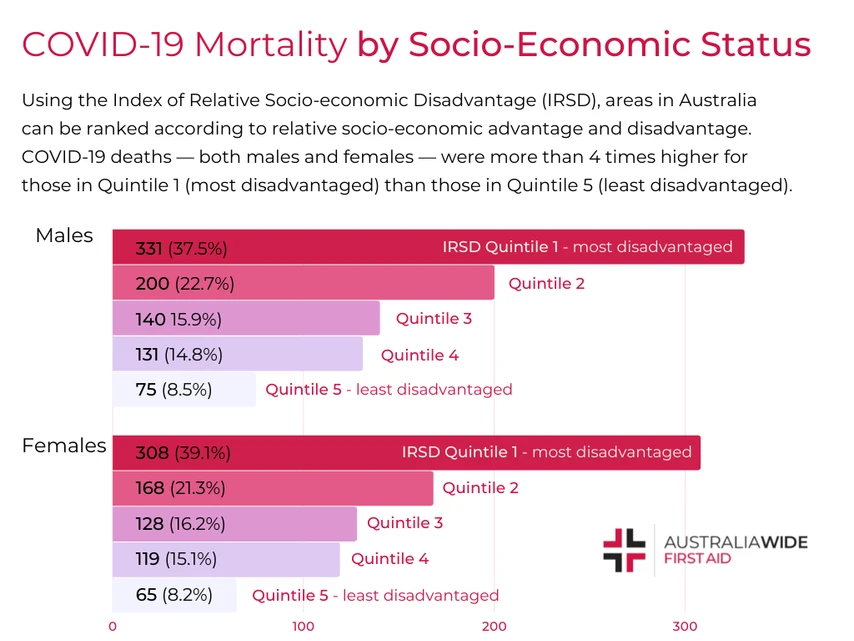
Areas in Australia can be ranked according to relative socio-economic advantage and disadvantage, using the Index of Relative Socio-economic Disadvantage (IRSD).

February 10, 2023
Home to some of the world's most dangerous shark species, Australia is one of the deadliest countries when it comes to human/shark incidents. In this article, we explore the number and outcome of shark/human incidents that occurred in Australia in 2022, to date.

December 20, 2022
Five diseases accounted for more than one-third of all deaths registered in Australia in 2021. And though our overall mortality rate remains low, Dementia is narrowing the gap to become one of Australia's deadliest diseases.
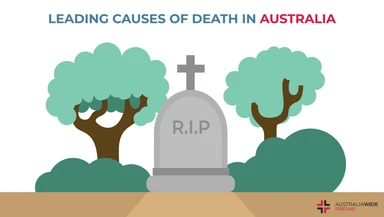
October 24, 2022
Health statistics are an invaluable tool for measuring the health of Australians and targeting prevention and treatment resources accordingly. In this article, we compare Australia's mortality rating from 2019 to 2020.